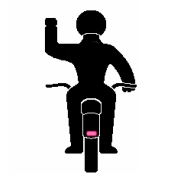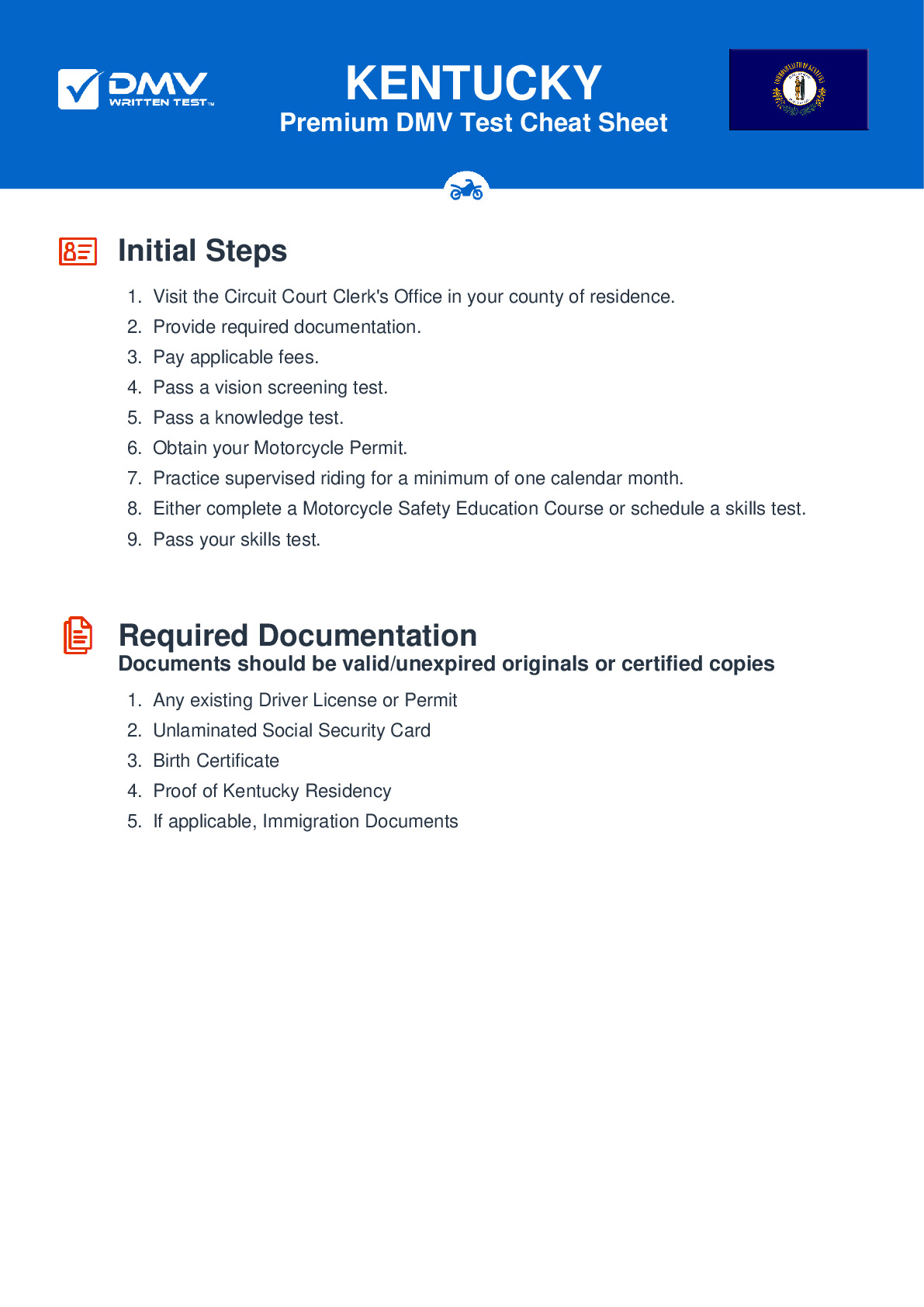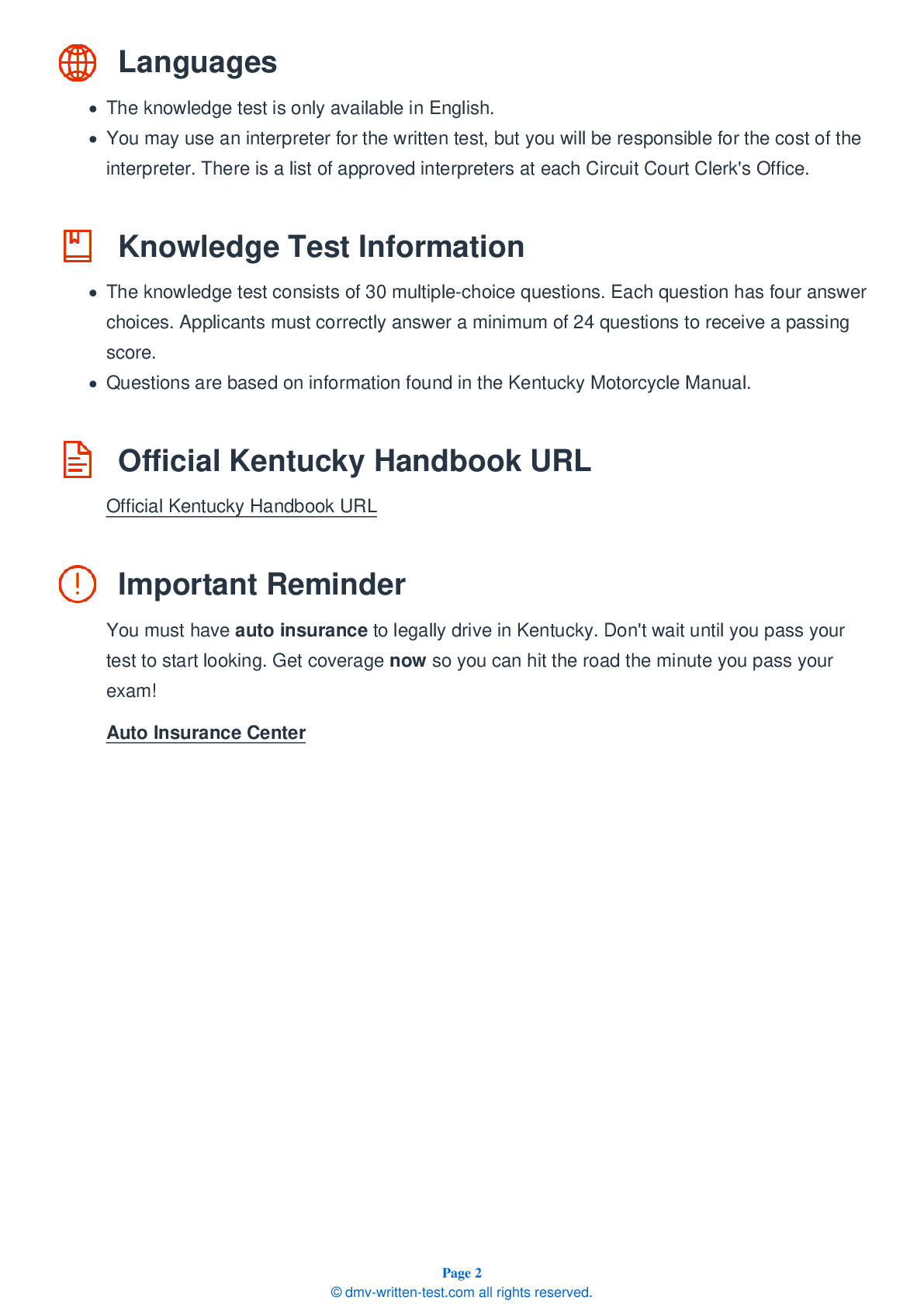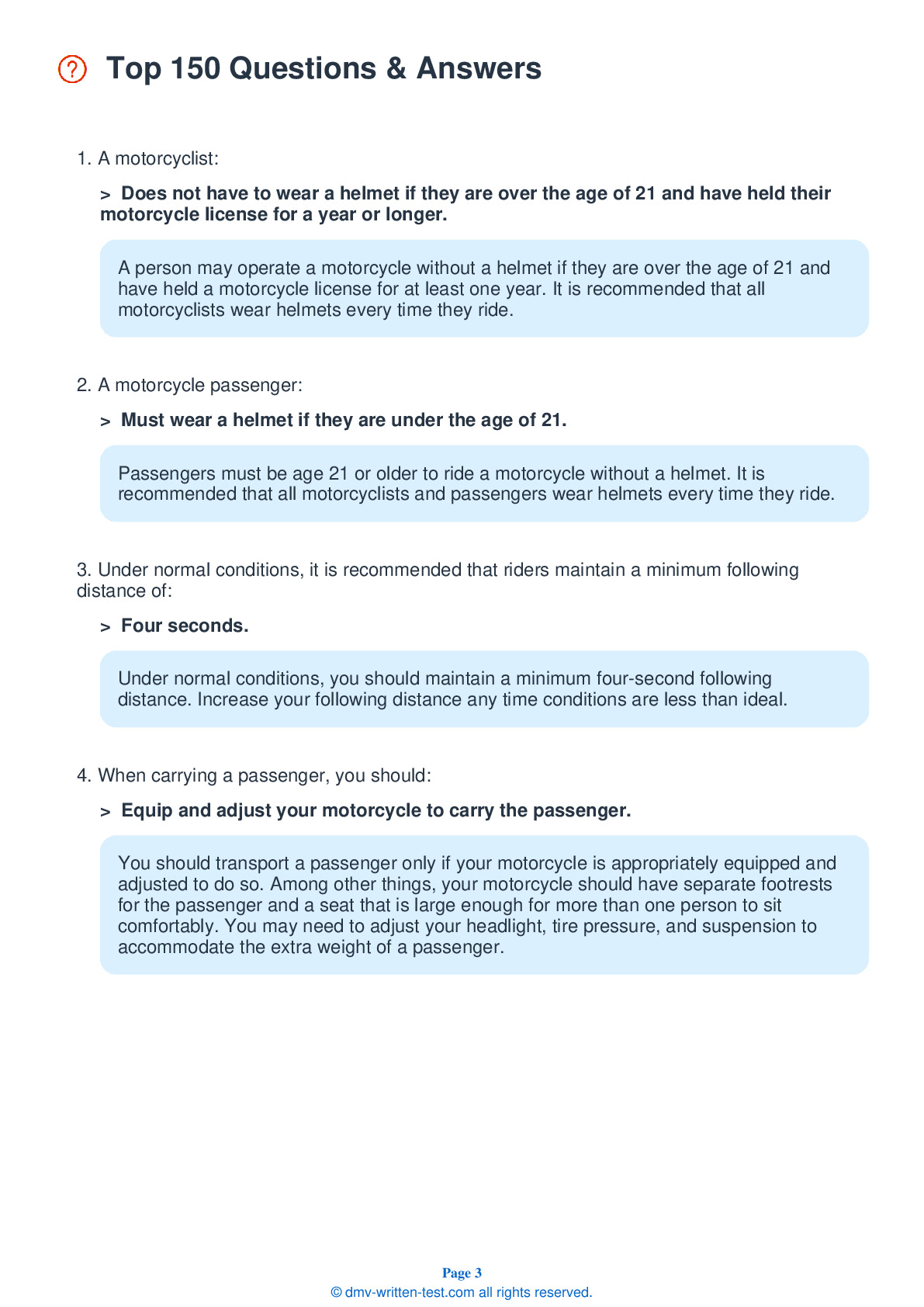2025 Kentucky Motorcycle Permit Test 11
The following questions are from real DMV written motorcycle permit tests. These are some of the actual permit questions you will face in Kentucky when getting your motorcycle learners permit. Each motorcycle theory practice test question has three answer choices. Select one answer for each question and select "grade this section." You can find this button at the bottom of the drivers license quiz. For a complete list of questions and answers for Kentucky please visit https://cheat-sheets.dmv-written-test.com/en/kentucky/motorcycle.
Number of Tests
Number of Question
Passing Score
15. Motorcycle riders:
Explanation
Longterm exposure to wind and engine noise can cause permanent hearing damage, even if the rider is wearing a full-face helmet. Wearing ear plugs or other hearing protection can guard against damage while still allowing the wearer to hear important sounds like horns and sirens.
16. When an operator's left arm is bent at the elbow and pointing upward, it means the operator:

Explanation
Instead of mechanical turn signals, operators may use hand signals to indicate turns or stops. If an operator's left arm is bent at the elbow and pointing upward, it means the operator plans to turn right or change lanes to the right.
17. When checking tire pressure:
Explanation
You should use a tire gauge to check the tire pressure before every ride. An under-inflated tire may still look okay, so a visual check is not enough.
18. Smoothly downshifting on motorcycles:
Explanation
Engine braking by smoothly downshifting can be a useful option for motorcyclists. If you choose to engine brake, apply your brake lights separately to let other drivers know that you are slowing down.
19. Which of the following will help you ride safely on slippery surfaces?
Explanation
When riding on slippery surfaces, reduce your speed, brake using both brakes, and avoid sudden moves. Avoid the center of the lane and instead follow tire tracks left by cars. Always keep an eye out for hazards that may make a road surface especially slippery, such as oil spots and loose gravel.
20. Slippery surfaces can make it difficult to control a motorcycle. Which of the following would be considered a slippery surface?
Explanation
Wet pavement; roads covered in loose gravel or sand; muddy, snowy, or icy areas; painted lane markings; and metal covers and plates in the road can be slippery surfaces. Motorcyclists should ride with extra caution when riding over slippery surfaces.
21. To lean the motorcycle for a turn, you should:
Explanation




